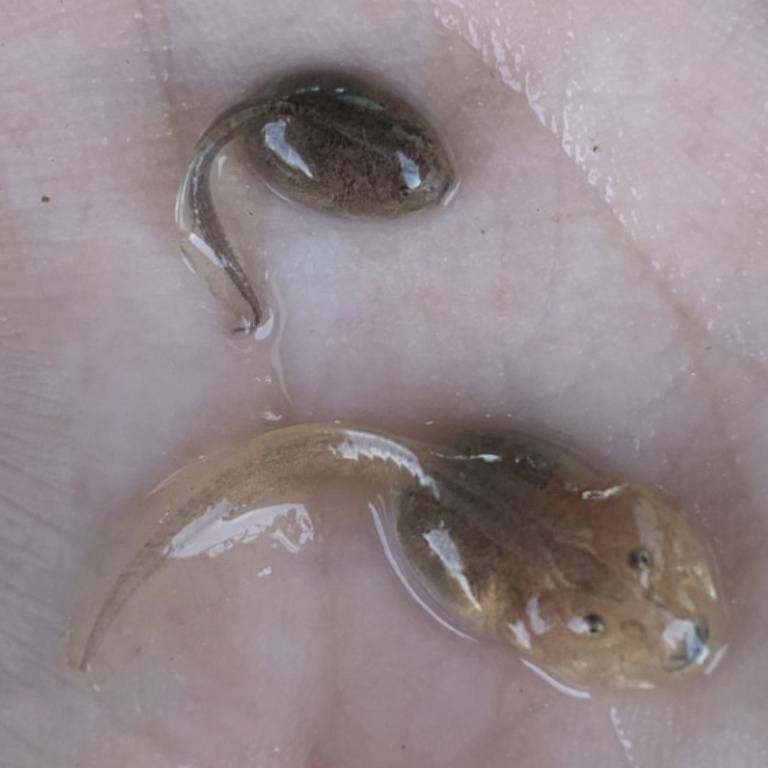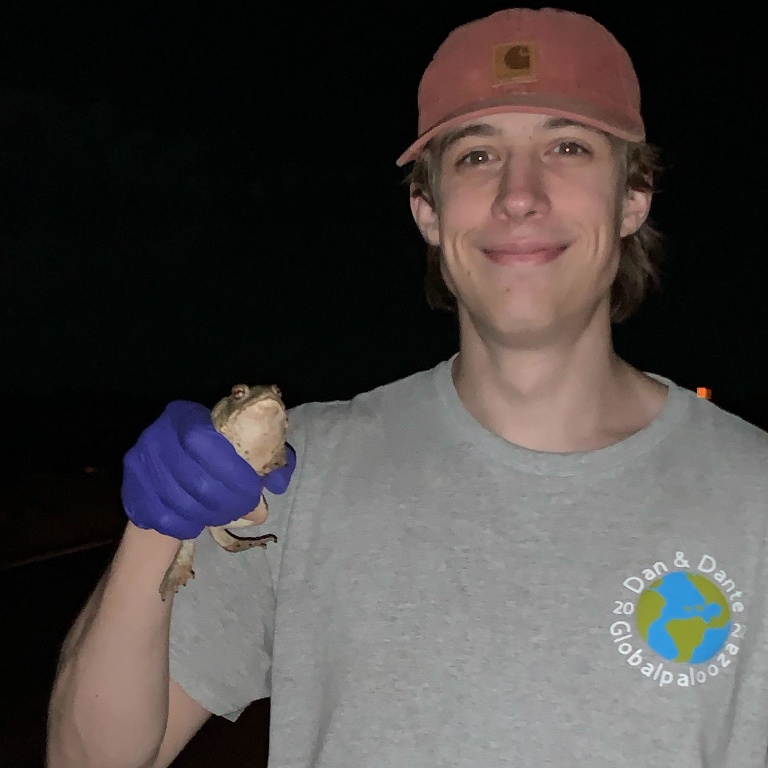Indiana University Bloomington assistant biology professor Cris Ledón-Rettig and graduate student Dante Nesta recently published a paper in PNAS entitled, “Cryptic genetic variation in brain gene expression precedes the evolution of cannibalism in spadefoot toad tadpoles.”
The Proceedings of the National Academy of Sciences (PNAS) is a peer-reviewed journal of the National Academy of Sciences and considered an authoritative source of high-impact, original research.
Ledón-Rettig said the mysteries of how novel physical traits (e.g., wings, appendages, color patterns) evolve have been studied for decades, but how novel behaviors arise is less understood.
“Our work sheds light on one process through which novel behaviors and in our case – cannibalism – can arise,” Ledón-Rettig said. “We found that natural animal populations can carry genetic variation that does not show under normal conditions, and only appears when that population encounters a stressful or novel environment.” When that variation appears, natural selection can act on it, shaping it into new traits, including behavioral traits such as the willingness to consume your siblings.
Another key insight from their work shows that how an individual’s brain responds to the environment heavily depends on its genetic background. That might sound obvious, Ledón-Rettig explains. After all, even people react to stress in different ways. “But, many studies of brain activity in wild animals don't consider these genetic differences, which means they might miss important patterns.”
Finally, the study identified a specific gene that was activated in response to stress and a novel environment and may play a key role in the evolution of cannibalism. “Interestingly, this gene belongs to a family of genes that are part of the stress response across many animals, including vertebrates and invertebrates,” Ledón-Rettig said. “This suggests that stress may often be involved in the evolution of novel traits.”
Ledón-Rettig and Nesta used two species of frog to conduct the study. One species, the plains spadefoot toad, has tadpoles that can grow in two very different ways. “Some develop like ‘typical’ tadpoles – hanging out on the bottom of ponds, nibbling bits of decaying material and staying out of trouble,” Ledón-Rettig said. “But others develop into fast-moving, cannibalistic hunters that actively chase and eat prey that can be their own size, including crustaceans and other tadpoles.”
The second species, the eastern spadefoot, is closely related but doesn’t develop these cannibalistic tadpoles. Ledón-Rettig said that it gave them a chance to ask: how might the ancestors of the cannibalistic species have responded to environmental stress before they evolved that behavior?
“Luckily, the eastern spadefoot is found in Indiana, making it easy to work with,” she said. To dig into this question, Ledón-Rettig and Nesta combined two types of research. First, they looked at the tadpoles’ behaviors and whether the ancestral type tadpoles were willing to consume their siblings under certain environmental conditions. Second, they used a tool called transcriptomics, which allows them to see what genes are being turned ‘on’ or ‘off’ in the tadpoles’ brains. “This helps us understand how their brains allow certain behaviors, like the decision to turn into a cannibal,” Ledón-Rettig said.



 The College of Arts
The College of Arts